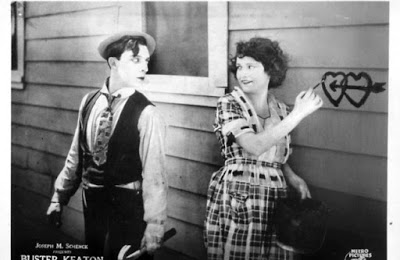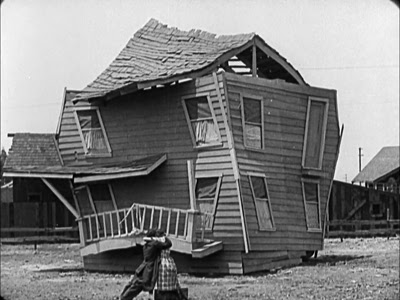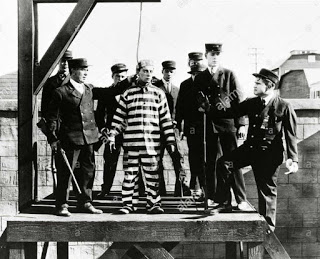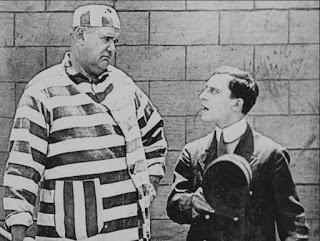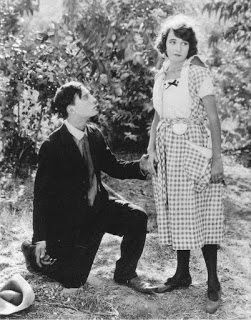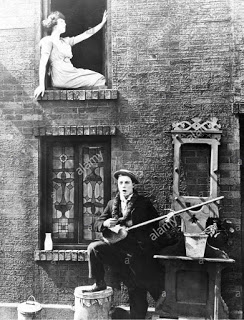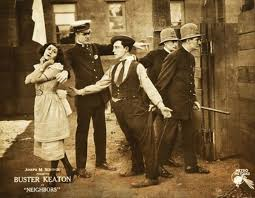Buster Keaton Shorts - 1920
One Week (1920) – 8/10
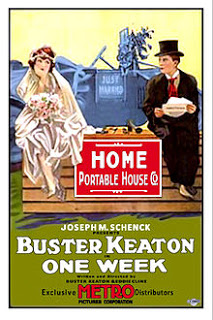
In 1920 Keaton was out on his own after working for Fatty Arbuckle on 14
shorts. Arbuckle left for a huge contract with Paramount but was soon enmeshed
in a sex scandal that ruined his career. Keaton stayed on with the Joseph
M. Schenck Production Company and was to stay there for most of his classic
silent films. Keaton had begun his film career with Arbuckle knowing nothing
about film but with a long and deep knowledge of vaudeville. Under Arbuckle
he was of course secondary to Arbuckle but it was a wonderful testing and
learning experience for him. Now he was ready to make his own films full
of his own ideas.
The first film he made was High Sign but when it was done Keaton was not
satisfied with it and stored it away until its release in 1921. Keaton wanted
something special out of the gate and did he get it with One Week. This is
an absolutely brilliant film full of spectacular stunt work, nutty gags,
a sense of absurdity that Keaton was to bring to so many of his films but
underlying it all is a very sweet sentiment. This film honestly makes everything
he did with Arbuckle look quaint and conventional. It was a huge hit and
Keaton was suddenly a star.
Keaton is a newlywed in the film married to the adorable Sybil Seely who
gets a few good stunts of her own. His uncle has given him a make your own
house kit that you put together by the numbers. But an ex-rival for his wife
switches the numbers around and the house that Keaton ends up with is something
that not even Frank Lloyd Wright could imagine. And it swizzles around like
a merry-go-round in high winds. This is simply a wonderful film with not
a moment of normalcy in it. Keaton once again does the stunt that became
famous in Steamboat Bill where a wall falls on him but he is standing in
the door way.
Convict 13 (1920) – 6/10
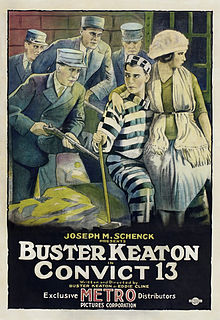
After the sublime One Week which was Buster Keaton's first film on his own
where he called the shots, he was asked by his financier Joseph Schenck to
appear in a film produced by Metro Pictures (later to merge and become MGM)
in a feature length film called The Saphead. This had been a theater production
starring Douglas Fairbanks and he wanted Keaton to take the role in the film.
So this was Keaton's debut in a feature but he had no input into it.
His next short was Convict 13 which is fairly enjoyable but not as perfect
as One Week. Few things are. More slapdash and conventional. With a few lovely
moments such as hitting a golf ball into a pond and diving to find the fish
that swallowed it or being hung but bouncing up and down like a yoyo.
On the golf course Buster is knocked out and an escaped convict trades clothes
with him. Buster ends up in prison after leading the cops on a merry chase
and realizes that he is to be hung that day. Throughout the Stone Face is
kept in place and his expression never shifts.
The Scarecrow (1920) – 7/10
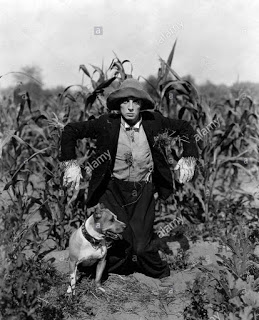
There isn't much meat in this one that is written and directed by Buster
Keaton but it has a lot of wonderfully silly laughs. The plot is that both
he and his quite large roommate are in love with the same girl (Sybil Seely
being adorable again). But from this ancient and well-used story, Buster
throws in three set pieces that have little to do with the story that are
terrific.
One is simply the room that he shares and the number of contraptions that
have been built to make life easier - a bed that when turned up becomes a
bureau, a dining room set nailed to a plank of wood so that food can be tossed
outside and then washed with a hose, condiments hanging from the ceiling
and so on. Then there is the dog chase - dog chasing Buster - that goes on
for about 10 minutes and is athletically brilliant and finally Buster disguising
himself as a scarecrow and then running from the father of his affection.
The best moment though is pure Keaton when he is on his knees and the girl
runs up to him and says she accepts his proposal. The look on Keaton's face
is stone faced acceptance of his unexpected fate.
Neighbors (1920) – 8/10
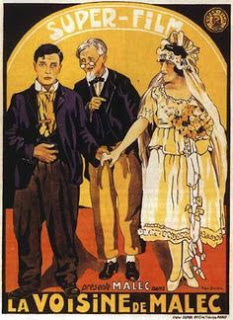
This is a remarkably brilliant physical performance from Keaton - best
I have seen yet - doing things with such grace I felt gobsmacked. He makes
it all look so easy but it must have taken ages to set some of these up and
get them right. He is in love with the girl next door and she with him but
a high wooden fence as well as their fathers are dividing them. The dexterity
in which Keaton gets over the fence and then climbs up to the third floor
is remarkable - but nothing compared to this stunt. He is on the 3rd floor
of his building and she on hers. He has to rescue her from her father - so
one friend comes out from a door on the first floor - a second friend from
a window on the second and stands on his shoulders - then Keaton comes out
of the window on the third floor and gets on his shoulders and they go over
to rescue her and then run down the street with her. Words do not suffice.
Buster's father is his own real father, Joe Keaton, who Buster had a rocky
relationship with growing up. The father had brought Buster into his vaudeville
act at 3 years old by throwing him into the rafters where he was hopefully
caught by someone. Buster had finally left the act when he joined up with
Arbuckle in 1917. The other father is the huge Joe Roberts who appeared in
many of Keaton's films until he passed away in 1923.
